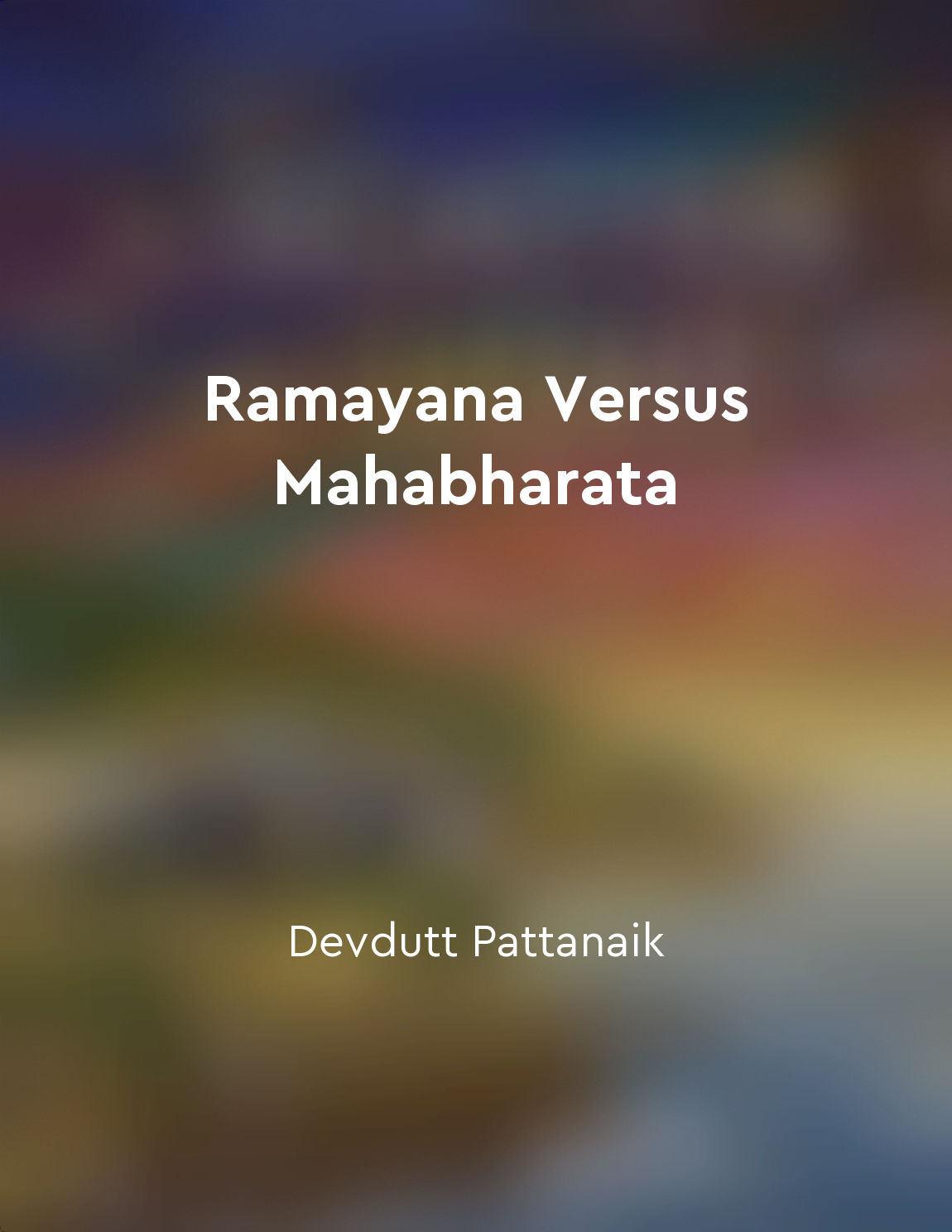Audio available in app
The Pandavas and Kauravas are central figures from "summary" of Mahabharata Unravelled by Ami Ganatra
The story of the Mahabharata revolves around the epic battle between the Pandavas and the Kauravas, making them central figures in the narrative. The conflict between these two families is the driving force behind the events that unfold throughout the epic. The Pandavas, led by the virtuous Yudhishthira, are portrayed as the righteous and noble protagonists of the story. They are guided by principles of dharma and justice, and their actions are often motivated by a sense of duty and righteousness. The Pandavas are seen as the embodiment of good and are celebrated for their moral integrity and courage. On the other hand, the Kauravas, led by the cunning and deceitful Duryodhana, are portrayed as the antagonists of the story. They are driven by greed, jealousy, and a desire for power, which leads them to commit numerous acts of treachery and betrayal throughout the epic. The Kauravas are depicted as the epitome of evil and are often condemned for their immoral and unethical behavior. The conflict between the Pandavas and the Kauravas serves as a symbolic representation of the eternal battle between good and evil, righteousness and wickedness. It explores themes of morality, justice, and the consequences of one's actions. The epic delves into complex moral dilemmas and ethical questions, forcing the characters to confront their beliefs and values. Throughout the Mahabharata, the actions and decisions of the Pandavas and the Kauravas have far-reaching consequences, affecting not only themselves but also the world around them. The epic explores the intricacies of human nature and the complexities of right and wrong, challenging readers to reflect on their own beliefs and morals.- The central figures of the Pandavas and Kauravas embody the eternal conflict between good and evil, serving as a powerful reminder of the consequences of one's actions and the importance of upholding principles of dharma and righteousness. Their story continues to captivate audiences and inspire moral reflection, making them timeless and iconic figures in Indian mythology.
Similar Posts

Ramayana's Lakshmana is loyal brother, Mahabharata's Yudhishthira is conflicted king
In the epic Ramayana, Lakshmana is portrayed as a loyal brother to Lord Rama. He is unwavering in his devotion and commitment t...
The fall of Bhishma Pitamah
The great warrior Bhishma Pitamah, known for his vow of lifelong celibacy and his unwavering commitment to the throne of Hastin...
Paul gains control as Muad'Dib
In the shifting sands of Arrakis, Paul Atreides embarks on a journey that transcends mere conquest. Through a series of trials ...
The great Kurukshetra war
The great Kurukshetra war was a pivotal event in the epic poem Mahabharat. The war was fought between the Pandavas and the Kaur...
The departure of Lord Krishna from the mortal world
Lord Krishna's departure from the mortal world is a significant event in the epic of Mahabharat. After the great Kurukshetra wa...
The game of dice
The game of dice, a pivotal moment in the epic Mahabharata, holds immense significance in shaping the course of events that fol...
Valmiki's epic Ramayana portrays the story of Kishkindha
Valmiki's epic Ramayana delves into the intricate tale of Kishkindha, a pivotal part of the larger narrative. This particular s...
Vali's confrontation with Sugriva leads to his downfall
Vali's confrontation with Sugriva was a crucial turning point in the Ramayana, leading to his eventual downfall. Vali's arrogan...
Introduction to Mahabharata, an epic saga
Mahabharata, an epic saga, is a timeless tale that has been passed down through generations. It is a story of love, betrayal, w...

